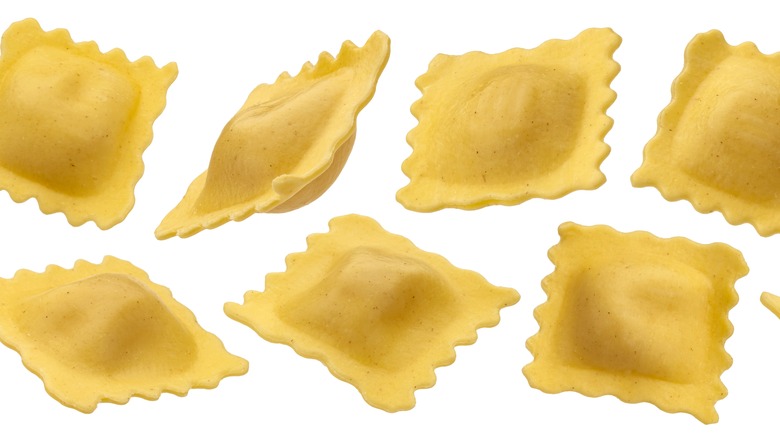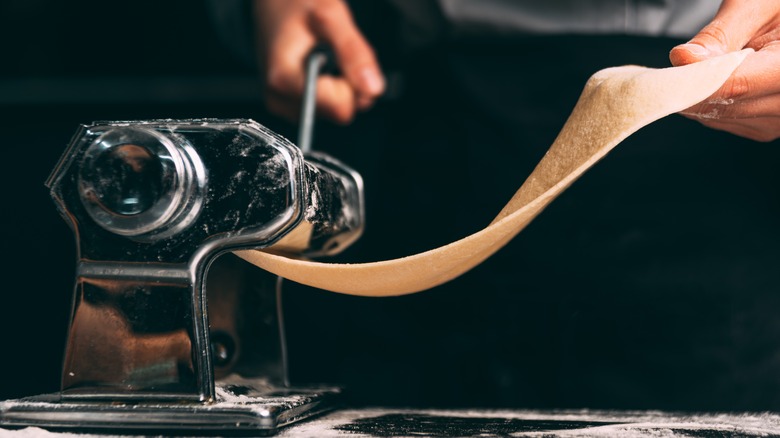The Rolling Tip That Will Give You Tastier Homemade Ravioli
Handmade pasta is the ultimate comfort food with a delicious bite that is definitely worth the extra arm work. With all the different noodle shapes, the pasta-bilities are endless, but one of our favorite pastas to make at home is ravioli.
Starting with a well of flour with bright yellow yolks in the center, you can turn this rich ball of dough into your most decadent ravioli dish yet ready to fill with meat and cheese. Whether you prefer your pasta pillows with a hearty beef or ultra cheesy filling, cut into squares or curved into crescents, these elements may seem like the star of the show, but they actually come second on the priority list when it's time to eat up this classic Italian staple. In fact, your dough — particularly its thickness — will have the biggest impact when you bite into your ravioli. While you don't need a fancy pasta machine to get the job done, rolling out slabs of dough into thin enough sheets with just a rolling pin can put your arm muscles to the test, and really the thinner you can get your dough, the better and more delicious it will be.
Roll the dough as thin as possible
When kneading the delicate, egg-y, pale yellow pasta dough, it's important to get it as smooth as possible so that the rolling process is a piece of cake. When making homemade pasta with the intention of crafting ravioli, it's crucial that you roll the dough as thin as possible. In fact, there is a saying that your ravioli pasta dough should be thin enough that you can read the newspaper through it. Pasta sheets that are too thick will result in ravioli that are too chewy, particularly on the edges where the pasta sheets are doubled up and crimped closed. With a thin enough dough, once cooked, your ravioli will have a delicate, tender, and dainty bite that spotlights the filling and the sauce. A thin dough also helps seal the ravioli's edges, as thick slabs of dough often bounce back and aren't easily pressed together.
So the next time you're rolling out your pasta dough, in order to know if it's thin enough, feel free to hold it up to see how transparent it is or place a piece of paper behind it to see if you can read the text. This is a true indication that you're ready for rolling into squares, dolloping the filling on, and sealing the edges shut.

